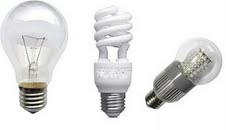|

 |
In Febuary 2013, some topics remained without response/answer. Maybe you could help the members to solve their problem.
|
Don't forget: it takes 5 minutes to do it and the person asking may become the one to answer YOUR questions in the future!
1. Controller Area Network (CAN) bit stuffing
2. Supercunductor Fault current limited (SFCL)
3. Transient voltage surge suppression sizing
4. Plasma technology
5. Comparison list between Terasaki, Schneider, ABB and GE Air Circuit Breakers
Thanks in advance for your active contribution to our community

 |
This month we present you one of our forum members: Bunna Rith |
Chief of technical office at Electricity Of Cambodia (Call EDC)
From Cambodia
The penalty of reactive energy in many Country is the subject which interest him the most
Thinks the community has lot of helpful article to share the experiences of each other, he often visit it (once a week)
Also thinks the community counts a lot of student, so that it lacks of interventions coming from experienced engineers
If you would like to become a moderator yourself, you can tell us by mail |
|

|
Year 2050 in terms of Electrical Power (scenario) |
 | It was not long ago when the Edison Electric Illuminating company supplied 600kW of energy from 6-dynamos to 85 customers. Just in a gap of 125 years the world has changed so much that 20,000 TWh of electric power is generated and supplied to 7 billion customers all over the world, a fact that all Electrical engineers can be proud of. |
|
With the world seeking a solution to meet the existing power crisis, this article takes you through a long-term vision, “Electricity scenario in the year 2050”. This is just a statement ensuring we work hard to give the future generation a power crisis free world to work with.
What's your opinion about this scenario? What do you think the world will be in 2050? Are you optimistic or pessimistic?
|
MORE>> |

|
Energy efficient lighting : CFL vs LED |
 | Two of the most common such electrical bulbs are the Light Emitting Diode (LED) bulb and Compact Fluorescent Light (CFL) bulb. These new-tech bulbs are designed to replace the incandescent bulb in form and function but with a much improved efficiency of converting electrical energy to light. However the use of any of the two has its own pros and cons.
|
| What do you think about this comparison between LED and CFL? Is there any others pros or cons in terms of efficiency, durability, cost, environment or versatility? |
MORE>> |

|
Deep insight into Power Factor Correction devices |
 | In the previous article "Is Power Factor Correction that important?" we discussed about the significance of power factor correction and the manner in which it can help conserve energy and capital. Furthermore, we hinted on the devices that can be used for the power correction. In this post, we shall expand on the devices front and explain modalities associated with them for a clearer picture. The intention is to explaining the practical aspects behind the process while reviewing four devices.
|
|
The post gives you an encompassing overview of the usage of such devices and the principle of usage. It is not possible to discuss all variants but the main intention is to understand the mechanism as to how the power factor can be increased. What’s your opinion about this review of 4 Power Factor Correction devices? |
MORE>> |
|
 |
|
